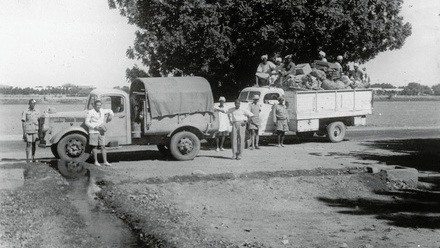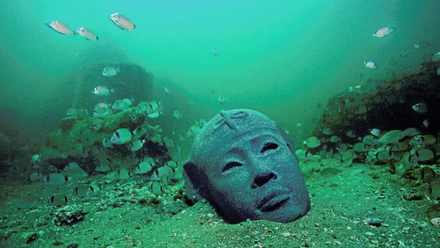Sanam Temple Project
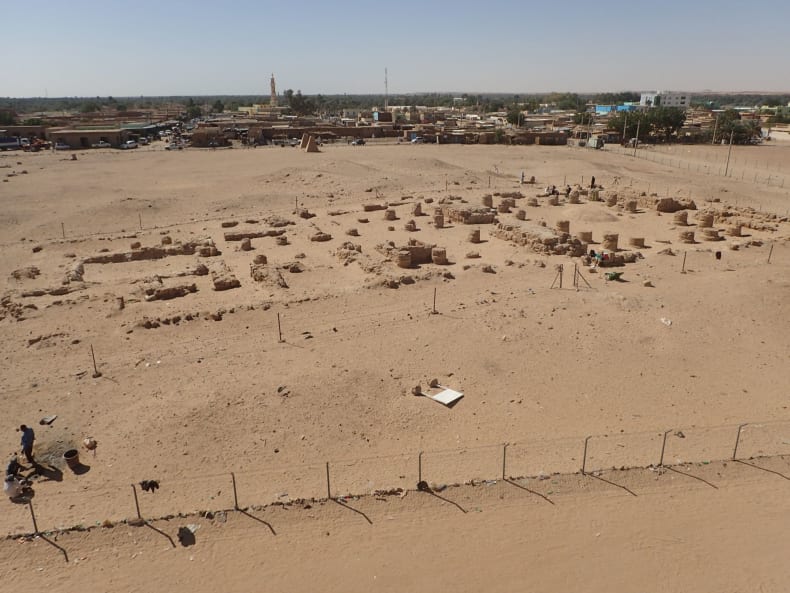
Aerial view of Sanam Temple, January 2018
King Taharqo, the 25th Dynasty’s master builder, constructed an extensive network of Amun temples throughout Egypt and Sudan in the mid-first millennium BC. Sanam Temple, located near the fourth cataract of the Nile in modern-day Sudan, stands out among these: it was located in the 25th Dynasty’s heartland of Napata, surrounded by an extensive royal monumental landscape. It is moreover relatively well preserved and, crucially, archaeologically accessible, unlike the majority of surviving Amun temples in Nubia. The temple was first excavated over a century ago in the course of a single season by Francis Llewellyn Griffith, who published only a preliminary report of his work, and has remained untouched and understudied since then. Despite its neglect, it has huge potential to provide evidence of the place Egyptian visual and material culture had in first millennium BC Nubia, and to address the question of why the Nubian kings used it so extensively. The Sanam Temple Project was initiated in 2017 by Dr Kathryn Howley (Institute of Fine Arts, NYU) to investigate how this imposing, Egyptian-style monument would have been integrated in the daily lives of the Nubian people who lived and worked around it.
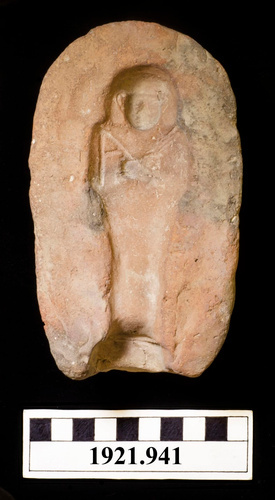
Left, a shabti mould discovered by Griffith at Sanam Temple. Ashmolean Museum 1921.941
One of the most important of these "daily life" activities was production. Griffith found several examples of faience moulds for the production of shabtis and amulets while working at the temple, though did not locate the production areas themselves, meaning that our understanding of faience production in Nubia is currently extremely limited. In the past two seasons of work, the Sanam Temple Project has conducted investigations to the rear of the temple, just outside the temple walls, where large quantities of faience beads, chunks of moulded faience, and shapeless “wasters” (by-products of the faience manufacturing process) were recovered. The most recent season also discovered a shaped stone surface which may have been used for production activity: future excavation will further clarify the exact use of this area and further illuminate the social processes by which presumably Nubian craftsmen made Egyptian objects in the latest styles for the Nubian royal family, quite literally in the shadow of the Egyptian temple’s monumental walls.
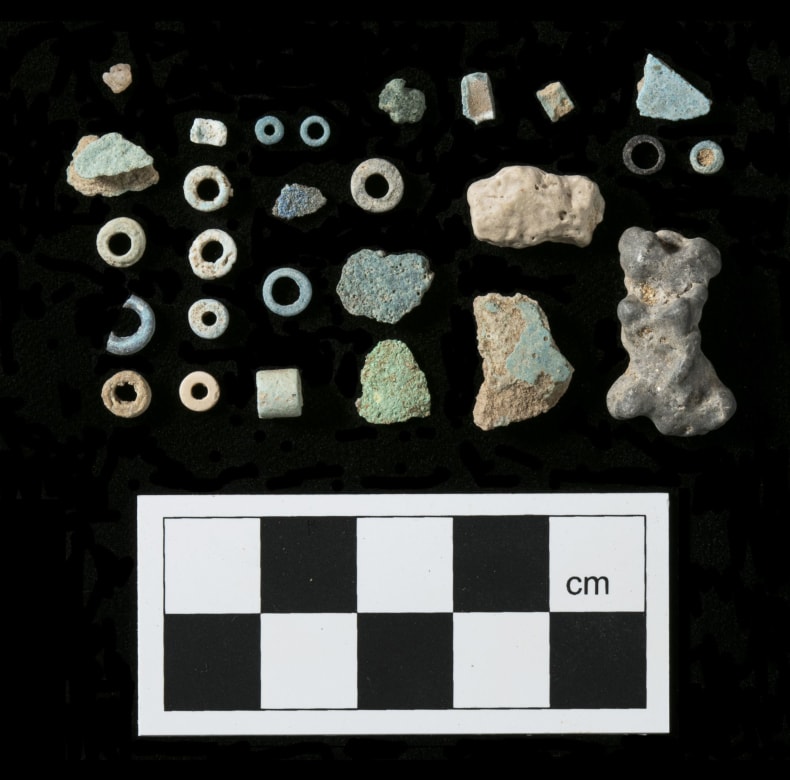
Selection of faience beads, fragments and wasters recovered from faience production areas at Sanam Temple in January 2018
The January 2019 season also produced some stunning examples from inside the temple of the results of the onsite faience production: not only did the team discover our very own shabti mould, but we also uncovered two caches of faience amulets and bronze Osiris figurines within the hypostyle hall of the temple. More than ever, the amount of archaeology that Griffith left behind after his swift single season is clear.
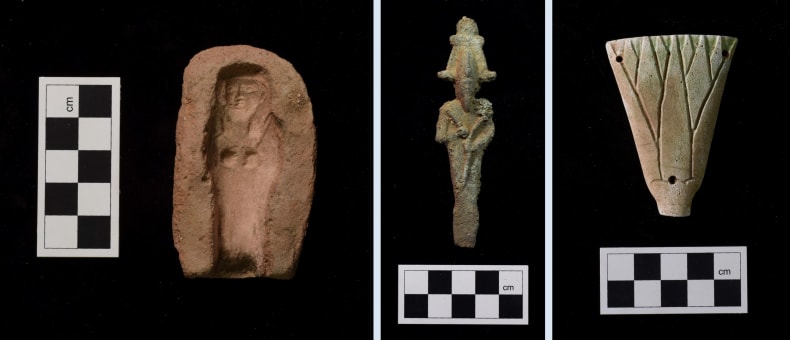
Left: Shabti mould found in hypostyle hall / Centre: Bronze Osiris figurine from cache in hypostyle hall, probably dating to the reign of King Aspelta / Right: Faience amulet from cache in hypostyle hall.
While the temple itself still has surprising secrets to share, the greatest potential to generate new insight into the ancient occupation of the area undoubtedly comes from outside the temple walls, where Griffith did not venture. Our excavations have uncovered a large amount of still-intact stratigraphy to the north-east of the first pylon of the temple. Excavations in January of 2019 revealed a monumental mud brick building that appears to predate the 25th Dynasty temple foundation, with walls still standing to 1.3m tall. Ovens found in one of the rooms suggest a domestic use, while preliminary ceramic investigation has given tantalizing hints that this building may in fact predate the 25th Dynasty, a period from which we have exceedingly little archaeological evidence in Nubia. We look forward to continuing this work in future seasons with the support of the EES.
Acknowledgements
The Sanam Temple Project would like to thank the National Corporation for Antiquities and Museums, Sudan, for their indispensable assistance, especially Dr Abdelrahman Ali Mohamed and Mr El Hassan Ahmed. Thanks are also due to the Levy White Foundation for their financial support; and Liam McNamara, the Ashmolean Museum and the Griffith Institute for facilitating our access to Griffith’s excavation archives.
Further Reading
Griffith, F. Ll. 1922. “Oxford Excavations in Nubia VIII-XVII, Napata, Sanam Temple, Treasury and Town” in Liverpool Annals of Archaeology and Anthropology 9, 67-124.
Pope, Jeremy. 2014. The Double Kingdom under Taharqo: studies in the history of Kush and Egypt, c. 690-664 BC. Leiden: Brill, 58-144

